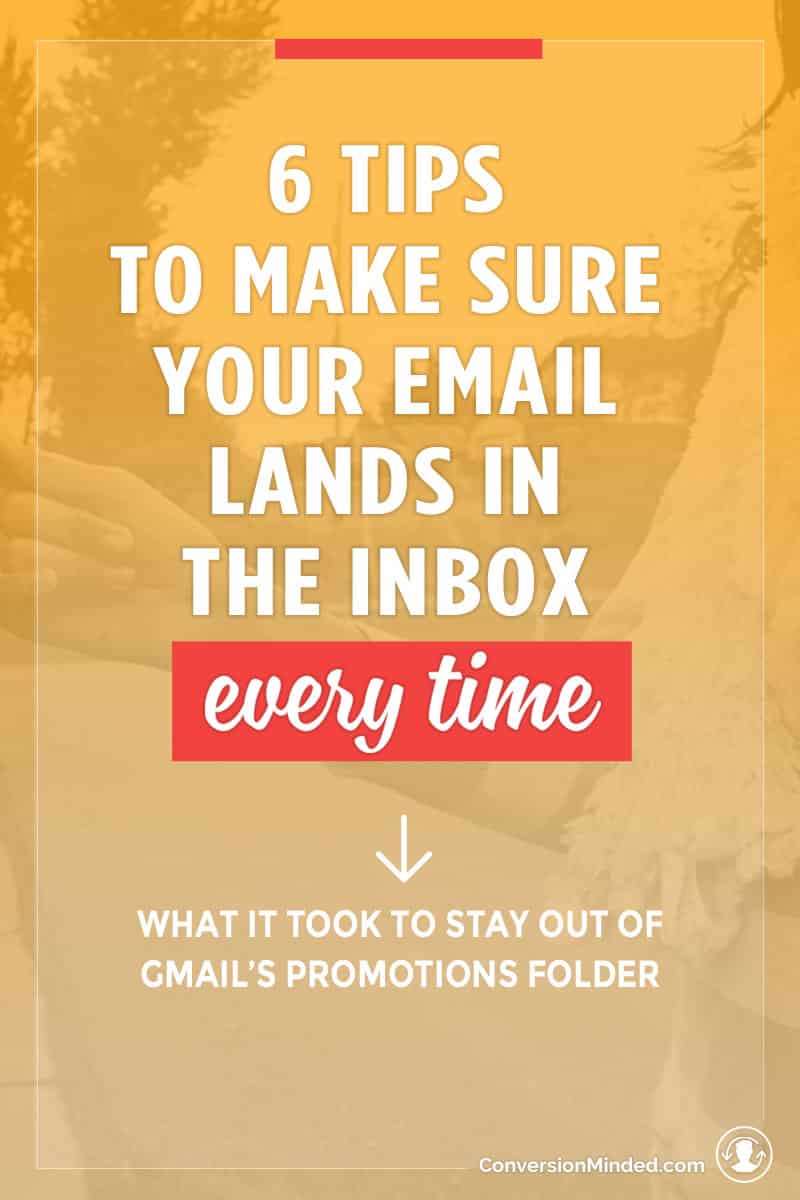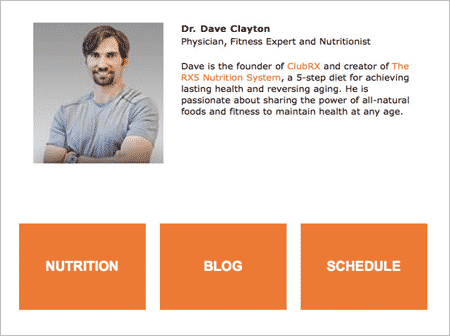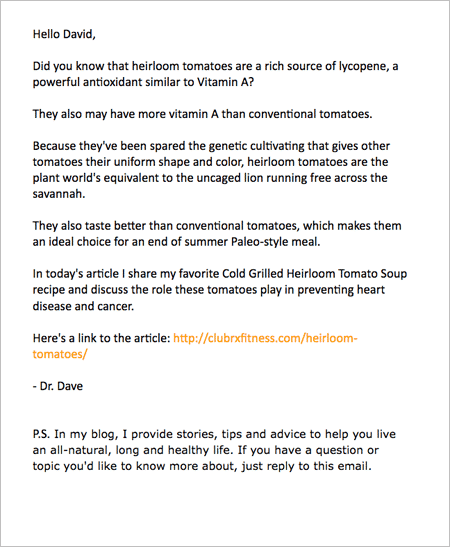
But what happens when your email doesn’t make it to the inbox? Both you and your readers miss out. It’s hard to track open rates accurately when your emails go straight to spam, so how will you really know what you need to improve? Your subscribers miss out too. They lose an opportunity to learn and grow from your communications.
I ran into this issue with a newsletter campaign recently. I use Constant Contact for my health & fitness business. Not because it’s my email marketing tool of choice, but because it integrates well with a member portal we use and I can automate communications with new member sign-ups.
I ran a slew of tests on our newsletter and noticed that emails were landing in Gmail’s promotion tab more than a few times. This is basically Google’s way of marking your email as junk mail. So if you’re noticing a significant decrease in open rate, it may be directly related to the way this filtering works. And it isn’t limited to Google – some emails were going straight to Outlook’s junk folder also.
After hunting down answers and doing some A/B testing, I finally got them out of the promotions folder and into Gmail’s primary folder. Here’s what one email looked like initially:
We had an image in the top to capture people’s attention right away. And further down, I added a link to the post, my brother’s image and bio with more links, and prominent buttons going to our website:
It turns out that we had to ditch those creative elements and calls to action in order to make it to the primary inbox. Here’s what it looked liked after editing, reshaping, tweaking, and testing:
That’s it. A plain text email and bingo – it was in the inbox on both Gmail and Outlook. When I stripped away everything else but text and one simple link, the email had a much better chance of landing in the primary folder.
Two other things seemed to make a difference:
It goes without saying that you can’t remove the Unsubscribe link because email marketing tools must conform to spam laws. But there’s a difference between using one simple unsubscribe link at the end of your email, and a whole slew of links that Constant Contact includes. Here’s an example:
That adds a total of five links to my email instead of just one. In Google’s eyes, multiple links are an indication that your email is promotional. How many links would you really send to a friend, right? At the same time, you need to include a link to your post or product in your email. Bottom line, your emails will have two links when they’re published: your link and the unsubscribe link.
What you don’t want is your email marketing platform to include more than just that one unsubscribe button (without giving you control to edit and remove them). I think the five links in this case are unique to Constant Contact because it’s not the case with MailChimp or Infusionsoft. Both of these marketing platforms will allow you to include one simple unsubscribe link and that’s it.
The other thing that seemed to make a difference was the subject line itself. All things being equal, changing the subject line from “Here’s a Delicious Way to End Your Summer” to “Checking in to see how you’re doing” increased the likelihood of it making its way the primary folder. This was a quick subject line I used to test, and it’s interesting to note that the first one seems more formal with the initial caps. The second one seems more like something you’d say to a friend and uses the sentence case.
This shows you the influence subject lines have on:
- open rates from email recipients
- landing in the primary inbox of subscribers
It’s just one more reason to A/B test your subject lines. Not only is your ability to persuade readers key if you want them to open them, but it looks like it’s a factor in whether or not your emails are seen at all. Check out this post for tips on writing killer subject lines.
Based on this test, here are my quick tips for getting your email read and opened (aka stay out of the junk folder):
Personalize your email
This is pretty straightforward. Use the mail merge tool in your platform to add the contact’s first name so that it seems like you’re already a connection. After all, you’re a person talking to another person and not a business. When you address someone by name they’re more likely to pay attention. And it makes Google happy.
Use the standard letter format
Keep your emails looking personal, as if they came from a friend. Make the reader feel like you’re talking directly to them. This will gets you higher open rates, plus you stand a better chance of converting readers when your email doesn’t come across as being a sales pitch or deal.
Don’t use images
Images make your email look pretty, but Gmail sees them as a sign of a promotion. It makes sense, because you really wouldn’t be inserting a photo into an email you shoot off to a friend or colleague. You’ll definitely increase readership by dropping pictures. The old ways of using email newsletters go against Gmail’s policies, so keep that in mind if you want to stay out of the promotions tab.
No more than one link
The point of the email is usually to drive traffic to your website, right? So, the prudent thing to do is write an exclusive email and give the reader reasons why they should click that link. Make it all natural and smooth of course. Now don’t get me wrong, you can get away with more than 1 link, but it’s not guaranteed you will survive the Google filter.
Watch for links in your preheader and signature too. The more links you have the more chance you have of winding up in the spam or promotions folder.
Shorter is better
Keep the email short and to the point. The longer it is, the less likely it is to make it to the primary folder.
Don’t sound salesy
If you want the email to go to the inbox, stay away from anything that sounds salesy. Terms like these are a red flag to Google that you’re promoting something:
- Free
- Help
- % off
- Reminder
- Weight loss
- Make $
- Explode your business
- Deals
- More like this…
These types of buzz words will definitely increase the likelihood of the email landing in the promotions or junk folder.
How important is all this, really?
This is a trade-off between readership and conversions in my opinion. Ultimately, you need to decide based on your content and your business goals. You may prefer to stick with their branded newsletter format. If your business is highly visual and images will have a big impact on your readers, it probably makes sense. On the other hand, if you’re sending links to your blog posts, you may not need anything more than a commentary and a link.
After all of this testing, I’ve decided for now to toss the dice on some (not all) of our emails. There are times when using the standard newsletter format works best and we have to cross our fingers that Gmail recipients will open the promotions tab. When I’m promoting a new blog post, I’m fine with the all text format. Since they’re content driven, all I need is a commentary and a link to the article.
Keep in mind that you may not see a difference in open rates at all, or you may find that the branded format actually performs better. Some of it will depend on what percentage of your subscribers are Gmail users and the platform they’re using to read their emails. They may use an email reader to access their email rather than the Gmail interface, in which case the promotions tab isn’t an issue.
Just another reason you need to test. And test. And test again. That’s really the only way to determine whether branded or faux plain text emails perform better.





